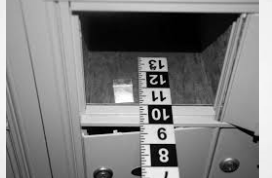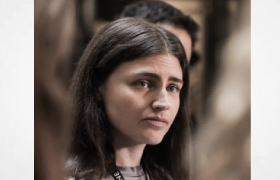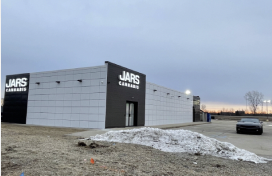You can read all his other amazing discoveries here. https://www.cannabinoidsandthepeople.whitewhalecreations.com/
Highlights
- •
Visuals of cannabis users, caregivers, and the plant dominate in online news images about medicinal cannabis.
- •
Medicinal cannabis users and caregivers were demarcated from recreational cannabis through use of a suburban setting.
- •
Images of cannabis were defined agriculturally, pharmaceutically, herbally, and less commonly, recreationally.
- •
Visuals of medicinal cannabis in news media are not neutral or peripheral in shaping discourses about cannabis.
Abstract
This paper reports on a visual framing analysis of Australian online news media images of medicinal cannabis (MC) from 2014 to 2021. It reports on two themes – people and place, and plant and place. The first theme reveals that images of MC users, including children, and familial caregivers were commonly emplaced within quotidian middle-class, suburban, domestic settings, thereby demarcating them from recreational cannabis users. The second theme situated cannabis as a plant in spaces which defined it visually as an agricultural product, pharmaceutical drug, herbal medicine, and less commonly as a recreational drug. This disparate photographic storyline blurred the boundary between recreational and medicinal cannabis.
Keywords
Medicinal cannabis
news media
Visual analysis
Visual geography
Framing
1. Introduction
This paper examines how photographs in Australia’s online news media contribute to the framing of medicinal cannabis (MC) in the period 2014 to 2021. This was a particularly complicated period in the drug’s history in Australia. In 2016 the Australian government passed legislation enabling a range of cannabis products to be prescribed by doctors. However, cannabis remained an ‘unapproved’ therapeutic good with the nation’s pharmacological regulatory authority, the Therapeutic Goods Administration (TGA), stating there is ‘limited evidence’ of its effectiveness for use in different medical conditions (Australian Government, 2018). Since the legislative change, patients’ access to MC has been circumscribed by a range of factors including the complex prescription requirements, the cost of the drug, laws which disallow driving while taking the drug, and inadequate General Practitioner (GP) knowledge to prescribe it (Bawa et al., 2022; O’Brien, 2019). Nevertheless, while it continues to be common for Australians to access MC illegally, since 2018–2019 there has been an increase in prescriptions for the drug (Bawa et al., 2022).1
To date, with a few exceptions (Keul and Eisenhauer, 2019; Morrison et al., 2014) there has been limited spatial scholarship on MC. Despite this gap, geographical studies on drugs more broadly are useful in highlighting how meanings attached to MC, like all drugs, are geographically fluid and often contested, as well as entangled in social, cultural and political contexts and discourses of morality (Wilton and Moreno, 2012; Williams and Warf, 2016). Through a detailed geographic history of cannabis from its earliest uses in premodern times to the contemporary period, Warf (2014) demonstrates the veracity of this claim. His conclusion that ‘there is not one, single meaning to cannabis, but a multiplicity of meanings that arise from, and contribute to, local relations of power and ideology’ (Warf, 2014, p.434) provides the entry point for our paper. That is, to ask what meanings about MC were conveyed in photographs in online news stories about the drug in the period 2014–2021 and to understand the implications of these meanings. We take a framing approach to our focus on images, as they have been overlooked in the literature on the mediatisation of MC, even though today media culture is highly visual (Thomson et al., 2023), and researchers are continuing to demonstrate the power of images in communicating ideologies of health and wellbeing (Harvey and Brookes, 2019; Brookes et al., 2021).
The paper is divided into six parts. We begin with introducing our theoretical framework of news framing, followed by a review of literature which considers place in media representations of MC. We then outline our methodological framework and explore our findings through two main representations: People and Place and Plant and Place. Images of People and Place legitimised MC by demarcating the boundary between medicinal and recreational cannabis, through visual signifiers of insiders to society (Morris, 2023) and suburban Australia. Images of Plant and Place also included a storyline of legitimisation through placing cannabis in medical, pharmaceutical, and agricultural settings, however, there was a disparate photographic storyline blurring the boundaries between cannabis as a medicine and recreational drug.
1.1. Framing as a theoretical framework
Drawing on the sociological theorising of Erving Goffman (1974) and the cognitive linguistic work of George Lakoff (2006), frames rely upon audiences’ existing belief systems, values, and narratives to carry intended meanings, or to resonate with or persuade them. Framing is a commonly used theoretical framework in media studies, pioneered by Robert Entman (1993) who explains that framing in news stories is about selection and salience, highlighting certain elements while disregarding others to promote a particular interpretation from the audience. Framings are created through giving prominence to or repeating words and symbols, connecting with cultural associations and creating resonance, thereby invoking a desired response accompanied by a moral judgement (Entman et al., 2009).
News studies concerned with visual images often use framing as a theoretical basis (Fahmy, 2010; Parry, 2010; Rafiee et al., 202) given the important meaning that visuals carry and the visual culture of news media (Thomson et al., 2023). Messaris and Abraham (2001) explain that in news stories, visuals may be more marked than words; images can convey meanings that would be more controversial through text. Images in news media are encoded with meanings, which are then decoded by the audience. These images can work to reinforce cultural stereotypes, (Parry, 2010), and are able to produce visualised meanings which support certain ideologies, as well as camouflage the constructed, historical, and social roots of ideology (Messaris and Abraham, 2001).
Other research notes that visuals in news stories often prime viewers toward dominant discourses reinforcing ‘preconceived notions and stereotypes’ rather than offering new information or perspectives (Griffin, 2004, p. 322). In this sense, images work toward setting the framing process in motion (Fahmy, 2010). When depicting newsworthy events, journalists may take photographs to accompany a report; alternatively, editorial staff may choose from a stockpile of archived images, which is common practice as news outlets are reducing staffing costs. Both approaches have bearing on the visual construction of the issue being addressed in the story and contribute to how the story identifies the problem, along with its causes, moral evaluations, and suggested solutions (Entman, 1993). Thus, news images are a selected visual construction of events (Rafiee et al., 2021). This selection by journalists is entwined with media logics like news values, news cultures, and commercial pressures that influence gatekeeping and editorial practices (Hinnant et al., 2017).
This study takes the theoretical position that news images work to visibilise or invisibilise (Thomson et al., 2023) selected aspects of an issue, and like a news text itself, can also work to legitimise or de-legitimise people, issues, and concepts based on the cultural, social, political, or economic resonance attached to the symbols in the news photographs. The legitimation of MC is a social process that becomes achievable when there is a generalised and collective perception through which MC is accepted as normalised, fitting, and desirable (Johnson et al., 2006). News media is a valuable site for observing such legitimacy unfolding, where images may portray MC as innovative, validated, and adaptable to other contexts, thus becoming part of the status quo (Johnson et al., 2006). However, such claims to normalisation may be premature and symptomatic of unchecked social privileges, as Reid (2020) argues, with stigma persisting on multiple levels.
We argue this through a focus on place; interested in how MC, and those who use it, can be legitimised within news photographs, largely through using certain geographic referents (Morris, 2023), which carry cultural associations and meanings. This is because ‘visual images are never innocent’ (Rose, 2023, p. 4) and there is a ‘slippery nature of visual meaning’ related to the importance of context (Bock, 2020, p. 7).
1.2. Place and the mediatisation of MC
Scholars have charted a continuum of MC framings in news media (Adler and Lewis, 2023; Abalo, 2021; Lewis et al., 2015; Morris, 2023), from cannabis as a drug, to a recreational ambivalent substance, to a positively valued medicine (Kępski, 2021). In this research spatiality has not been the conceptual focus, but findings have repeatedly foreshadowed its significance in affording meaning to MC. For example, Morris (2023, p. 193) reports in a study from the UK that ‘symbolic boundary work’ tied to place is a key theme in constructing meanings of the drug. He revealed that in the 1990s MC users in the British media were framed as respectable social insiders through reference to older age, social class or ‘social geographic referents’ such as ‘suburban’ (p. 139). In another Australian study of online news media, Adler and Lewis (2023) found MC’s legitimacy was also attached to place with stories often highlighting the drug’s embeddedness in community rather than in medicalised and scientific spaces.
Other research exploring visuals of MC has provided further evidence of the potential importance of place in framing the drug either positively or negatively. Drawing on 458 news media images of cannabis before and after the drug was legalised in Colorado in the United States, Mortensen et al. (2020) report that even after legalisation, images tied cannabis to criminality and ‘otherness’ with images such as mug shots or people being arrested or in jail. The role of place in the visual codification of MC is further demonstrated by Asquith (2021) and Bakken and Harden (2022) through studies of Instagram. Asquith (2021, pp. 341–342) identifies the ‘visual clichés’ attached to cannabis promotion which they label ‘conspicuous production’ and include images of cannabis as a legal product in greenhouses, labs and production facilities. Other clichés such as ‘the freedom of open space’, ‘necessary ingredient ‘and ‘authentic experiences at home’ (Asquith, 2021 pp. 344–346), afford legitimacy to the drug via place – that is, its use in a natural landscape, at social gatherings, or in a home setting. Adding to this analysis Bakken and Harder (2022, p.154) assert that as women begin using recreational cannabis on Instagram the drug is often tied to feminised spatial practices such as mothering or hanging out with girlfriends.
Research about the mediatisation of MC has revealed that MC, like cannabis, is not one ontologically discrete object, but rather situated within a multitude of discourses (Duff, 2016). To date, however, only limited attention has been given to visuals and place in the discursive process of MC meaning-making.
2. Materials and methods
2.1. Sample and data collection
Data for the visual framing analysis was gathered from Australian Broadcasting Association (ABC) online news and News.com.au which are publicly and privately owned respectively. They both include regional and national outlets and are the most commonly visited news websites in Australia (Park et al., 2022). We selected January 2014 to December 2021 for analysis to capture the period before legalisation in 2016, up until the time of data gathering. The terms ‘medical cannabis’, ‘medicinal marijuana’, ‘medical marijuana’, ‘CBD oil’, and/or ‘cannabinoid’ were used to search for articles via the search engine on each website. This search retrieved 901 ABC articles, and 910 News.com.au articles. These articles were then stored in two CSV files, and carefully scanned by the lead author and deleted according to a set of exclusion criteria which assessed: whether they focused on recreational cannabis not MC; if they were mistakenly captured by the web scraper and were not relevant, if the news items were two sentences or shorter, or if they were a duplicate. This resulted in a dataset of 816 articles (n = 336 from ABC and n = 480 from News.com.au).
To create a manageable dataset, a systematic sampling approach was used (selecting every nth unit from the larger data set). Three hundred articles (150 from each outlet) were chosen to create an even, manageable sample, which was considered sufficiently robust for the type of descriptive quantitative and in-depth qualitative analysis we aimed to undertake. The nth unit was determined by dividing the total sample (n = 816 articles) by the desired sample size (n = 300 articles) (Riffe et al., 1993). Division of the sampling frame to size resulted in intervals with non-integer values (nth unit for ABC = 2.24, and nth unit for News.com.au = 3.2). Therefore, to reflect the nth units, and to ensure consistency and accuracy, a rounding technique was enforced in Excel. We drew on the floor function to round to the lowest integer (to avoid overshooting the sample), creating a systematic list – or sampling pattern – from which articles could be selected to adhere to the sample frame to size ratio. This systematic list was then used to select 150 articles from each news outlets (300 in total). Each list was stored in an Excel spreadsheet which included a link to the article.
2.2. Visual framing analysis (VFA)
VFA examines how, through their selection and organisation, photographs convey unverbalised perspectives or ideologies which accentuate a particular interpretation or worldview (Heuer et al., 2011, p.911; Messaris and Abraham, 2001). The approach we used involved examining the images in connection with the news story rather than in isolation and drew upon Rodriguez and Dimitrova (2011), who outline four different levels of completing a VFA: denotative, stylistic-semeiotic, connotative, and ideological.
For the denotative stage, we categorised and quantified the images using broad inductive content categories, which acted as the over-arching topics for our frames (Zhang and Hellmeuller, 2017). If relevant, we were guided by the words surrounding the photograph. For instance, if the image was a headshot of a woman, we would use the text surrounding the news story to see if she was described as a ‘grandmother’, ‘mother’, ‘wife’, ‘advocate’, and so on, helping us arrive at the overall categories. These categories allowed us to identify the ‘who’ or the ‘what’ within the images. We would also read the text of the article to consider the relevance of the images to the topic of the report. It is important to note that the sample for this visual analysis was drawn from a larger study on news framings of MC in Australia (Adler and Lewis, 2023). We referred to Adler and Lewis, 2023 when needed for clarification on how the text within these articles had framed MC. From here, we turned our attention to each individual image again to complete the next three level of analysis.


















